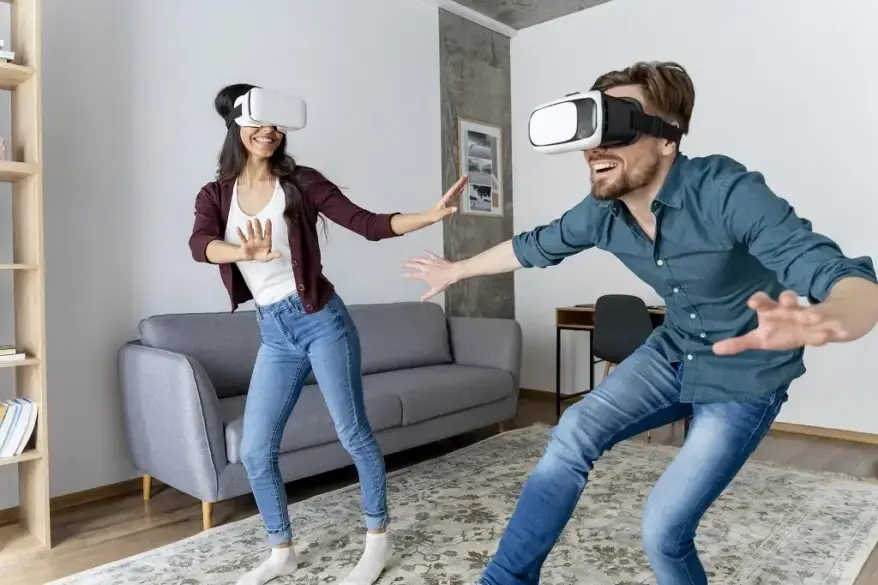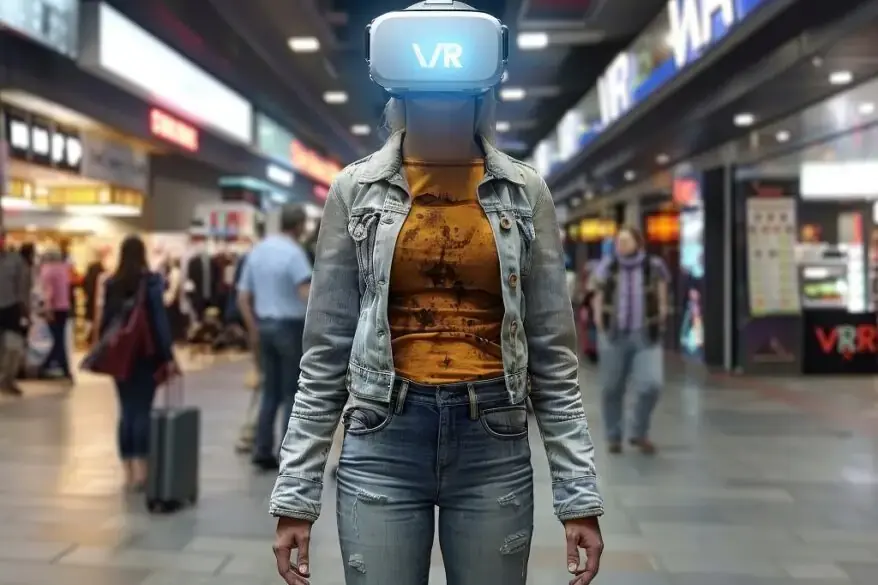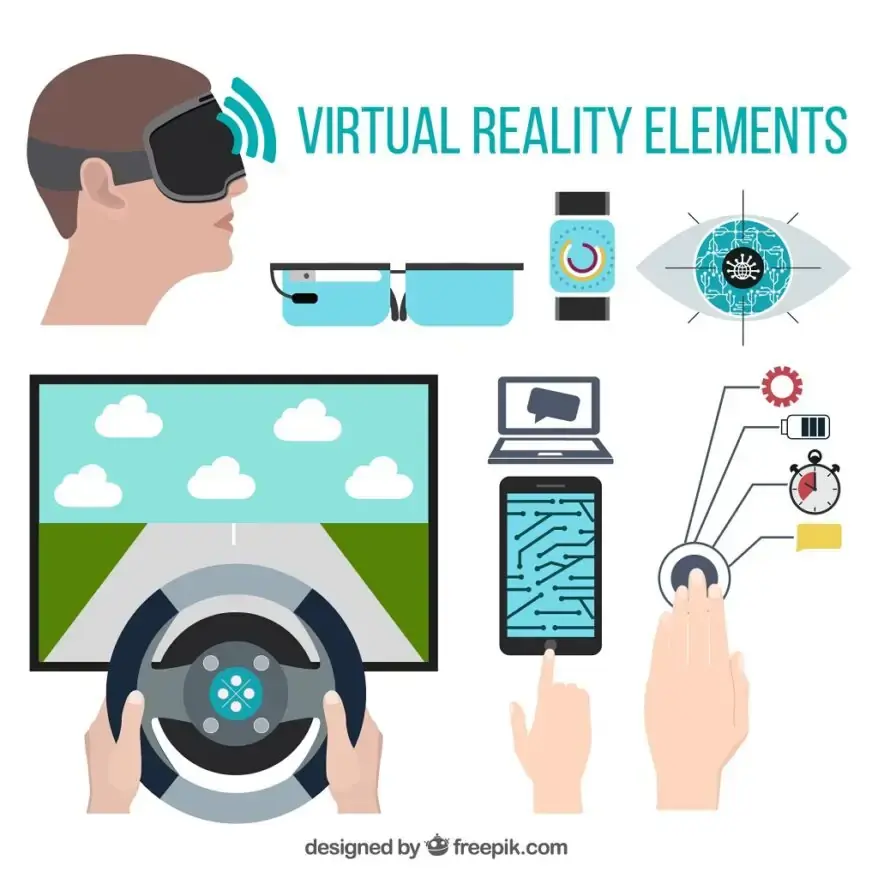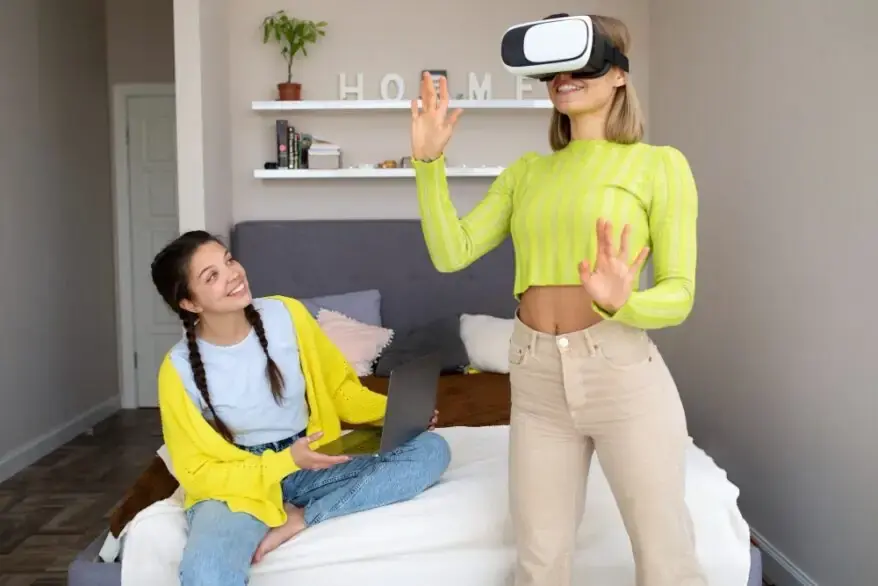Creating Immersive Experiences: The Tech Behind VR and AR Systems
In the big world of technology, Virtual Reality (VR) and Augmented Reality (AR) are two important ideas. VR lets people enter digital worlds. AR adds digital information to what we see in the real world. These tools change how we play games, learn new things, and communicate. We are now at a point where the virtual and real worlds are becoming mixed. It’s essential to understand the complex technology behind these experiences. This article from ENTECH wants to explain VR and AR in detail. It will show how these immersive experiences are created.
The Essence of Immersion in VR and AR

The idea of immersion is key to VR and AR experiences. Immersion is the feeling of being “inside” the digital world, fully involved and present. Achieving this requires a combination of technologies. High-quality screens cover our entire field of view. Sensors track all our movements. The goal is to make the digital world feel real. But what does it mean to be immersed? It means our senses are so engaged that we forget about the physical world. We accept the digital world as our reality. This intense involvement makes VR and AR exciting and powerful.
Sensors: The Unsung Heroes

Sensors are the hidden heroes behind the magic of Virtual Reality (VR) and Augmented Reality (AR). They make immersion possible. These small parts are often ignored. But they play a massive role in creating believable virtual worlds. When you look up at a virtual sky, sensors detect the tilt of your head. When you reach out to touch a digital object, they sense the movement of your arm. Sensors are constantly at work. They gather a lot of data. This data is then processed in real-time. Real-time processing adjusts the virtual environment immediately. This creates a continuous feedback loop. A feedback loop is a system that takes actions based on ongoing input to create desired results. This ensures the digital world responds instantly to user actions. The result is a seamless and interactive experience.
Optical Character Recognition (OCR)

Optical Character Recognition, or OCR, improves VR and AR. These are virtual reality and augmented reality. OCR allows real-time text recognition in immersive environments. When you learn about this technology, you understand OCR software better. You also learn its role in VR and AR platforms. In AR, OCR lets users scan real-world text. Users can then interact with this text. It overlays digital information or translations directly onto physical objects. In VR, OCR can turn printed text or signs into digital content within the virtual space. This allows for dynamic content integration. This technology improves user engagement. It blends physical and virtual elements seamlessly. This creates more interactive and informative experiences.
The Role of 3-Axis Systems

3-axis systems are a key part of MEMS technology. MEMS stands for Micro-Electro-Mechanical Systems. These are small devices that combine electrical and mechanical parts. 3-axis systems can measure movements in three directions. These directions are up and down, left and right, and forward and backward. This kind of tracking is essential for virtual reality (VR) and augmented reality (AR) experiences. It captures every small head movement, tilt, and gesture. Then it mirrors these actions in the virtual environment. 3-axis systems watch how a user moves. These systems keep the virtual world in sync with what the user does. A 3-axis system monitors movement in three directions: up and down, left and right, and forward and backward. This tracking ensures that the virtual environment matches the user’s physical movements accurately. This makes the virtual experience feel natural and intuitive.
Gesture Recognition: Beyond Basic Tracking

Tracking a user’s position and orientation is important. Recognizing their gestures is also essential. This adds more depth to the VR and AR experience. Gesture recognition technology identifies specific hand movements. It can even detect finger positions. This technology allows users to interact with the virtual environment. They can do so in more detailed and complex ways.
For example, a user can “grab” a digital object. They can also “push” a virtual button. Additionally, they can “wave” to a digital character. VR and AR systems recognize and respond to these gestures. This offers a richer and more interactive experience.
Challenges in Achieving Seamless Immersion
The journey to complete immersion in VR (Virtual Reality) and AR (Augmented Reality) has many challenges. Developers need to ensure accurate tracking in various environments. They must also minimize latency. Latency is the delay between a user’s action and the system’s response. If it is too high, it can disrupt the feeling of immersion. Making these experiences available to more people is another challenge. Developers work to ensure that experiences are compatible with different devices. They also focus on optimizing power consumption to allow longer use. However, each challenge presents a chance for innovation. The VR and AR community constantly pushes boundaries to improve the user experience.
The Future: What Awaits VR and AR?
The horizon of VR and AR is full of possibilities. As technology continues to advance, we can envision even more immersive experiences, perhaps even engaging senses beyond sight and sound. Haptic feedback, which allows users to “feel” digital objects, is just one avenue of exploration. There’s also the potential for multi-user virtual spaces, where users can interact with each other in real-time. As AI and machine learning integrate further with VR and AR, we might even see virtual environments that can adapt and respond to individual users’ emotions and preferences.
Conclusion: The Dawn of a New Digital Era
The merging of VR and AR technologies represents a big shift in how we interact with digital content. No longer are we passive consumers; with VR and AR, we become active participants, fully immersed and engaged. As things stand at this exciting juncture, it is clear that the developments and advancements in VR and AR will shape the future of digital interaction. The dawn of a new digital era awaits, and it promises to be nothing short of transformative.
To stay updated with the latest developments in STEM research, visit ENTECH Online. This is our digital magazine for science, technology, engineering, and mathematics.
At ENTECH Online, you’ll find a wealth of information. We offer insights and resources to fuel your curiosity. Our goal is to inspire your passion for new scientific discoveries.
Disclaimer: This article/blog post is not intended to provide professional or technical or medical advice. Please consult a healthcare professional before making any changes to your diet or lifestyle. AI-generated images are used only for illustration and decoration. Their accuracy, quality, and appropriateness can differ. Users should avoid making decisions or assumptions based only on the text and images.






